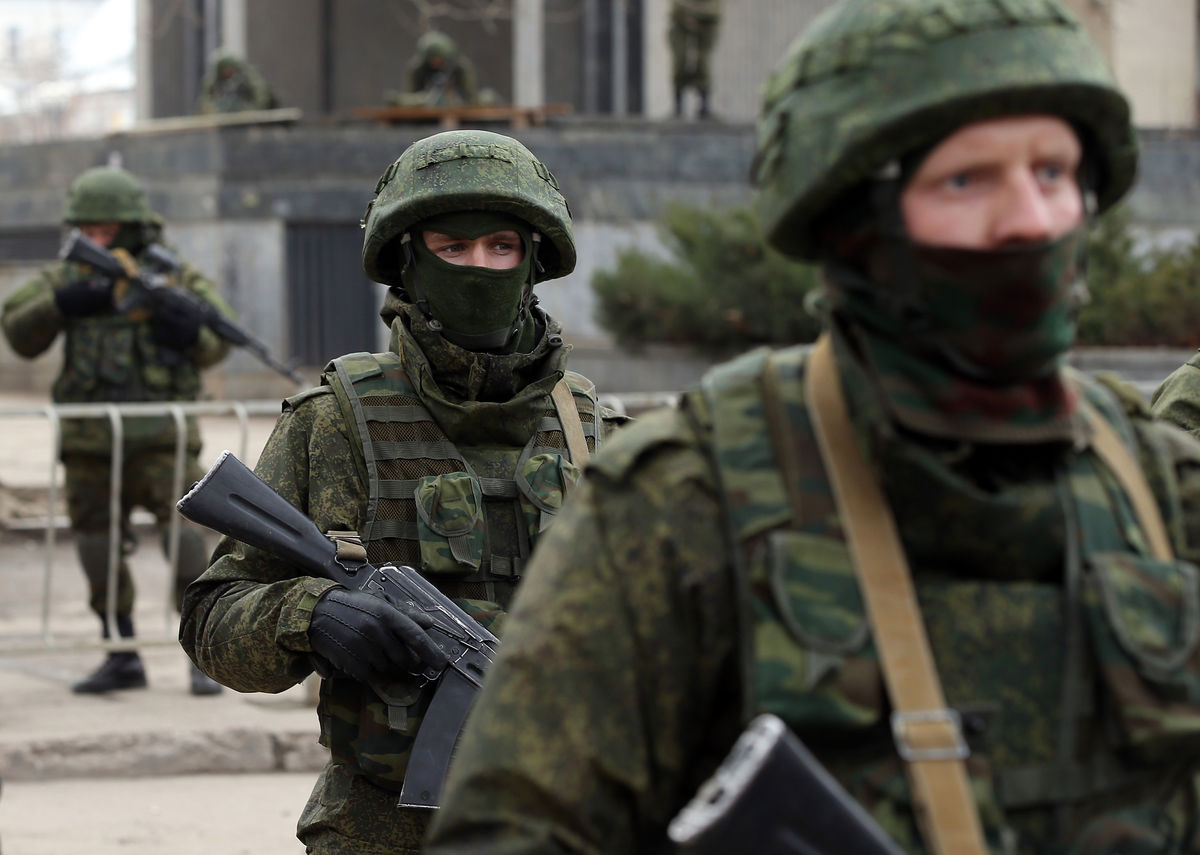It has been less than a month since the overthrow of President Yanukovych by the Euromaidan protesters, only days after it looked as if hell had broken loose in Kiev, Ukraine, as government forces opened fire on the crowds. The international community thought that the Ukrainian crisis was over. As it turns out, it was only beginning.
As protesters stormed the president’s palatial estate and found overwhelming evidence of his corruption — including personalized brandy, a private golf course (complete with monogrammed golden drivers), and a private zoo — Yanukovych addressed the the nation that had deposed him from across the Russian border, claiming to still be the legitimate leader of Ukraine, and asking for Russia’s assistance in reclaiming the presidency.
While Vladimir Putin did receive permission from the Russian Duma to intervene militarily, he initially contented himself with a massive military exercise on Ukraine’s eastern border, close to some of the cities that had held pro-Russian demonstrations in response to the Euromaidan protests in Kiev.
The international community thought that the Ukrainian crisis was over. As it turns out, it was only beginning.
When we in the Western world checked the news the following day, we were shocked to hear reports of uniformed soldiers lacking any national identifiers blockading and seizing control in the Crimea.
Crimea, despite being the home of the Russian Black Sea Fleet, is part of Ukraine, and guaranteed to the nation by a 1994 treaty. Though the Duma denied that these men were Russian military, referring to them as Crimean self defence forces, very few in the international community were fooled — many began to refer to this as a Russian invasion of Ukraine. Russian forces stationed on the peninsula by treaty did move out of their bases, but under the pretext of protecting the ethnic Russian population.
With the government in Kiev still reeling from the rapid transition of power, the Russian forces swiftly seized control, with some estimates claiming that close to 11,000 Russian military personnel were on the peninsula and in control. What followed was a brief period of calm, in which the Prime Minister of Crimea announced that they would be holding a referendum wherein the people of Crimea could vote to secede from Ukraine and join Russia.
For reference, the Russian population in the peninsula accounts for about 58 per cent of its total inhabitants.
Despite sanctions from the international community and an attempt by the United Nations Security Council to condemn the referendum and move towards a diplomatic solution (which Russia vetoed), the vote went forward on March 16. When the votes were counted, it was found that almost 95 per cent of those who voted were in favour of Crimea joining Russia. Talk about a majority.
I say “those who voted,” however, because massive irregularities in the referendum are already being reported. According to Vice, who has reporters in the area, many of those who were against secession never received voting information. As if that wasn’t enough, they also have reports that the city of Sevastopol, the capital of Crimea and headquarters of the Russian Black Sea Fleet, had a voter turn out of 123 per cent.
It is no wonder that after the results were announced, Prime Minister Stephen Harper made the following statement: “The so-called referendum held today was conducted with Crimea under illegal military occupation. Its results are a reflection of nothing more than Russian military control. This ‘referendum’ is illegitimate, it has no legal effect, and we do not recognize its outcome.”
The following morning, Crimea declared its independence, and within hours, Ukrainian symbols were torn down from local government buildings, the local currency was switched to the Russian ruble, and clocks were synchronized with Moscow time. President Putin followed with a recognition of the new republic, a potential first step towards annexation.
In response, Ukraine is preparing for conflict. Volunteers, many of them former participants in the Euromaidan protests, have begun training to supplement Ukraine’s professional army in the event that Russia is not content with merely occupying Crimea. As of this article’s publication, shots have already been fired between Russian and Ukrainian forces. It’s only a matter of time before the conflict escalates, possibly resulting in a full scale war.
Interim President Oleksandr Turchynov compared Russia’s actions with those of Nazi Germany, occupying the Sudetenland in the lead up to the World War II. As a student of history, it is hard to ignore the parallels.
It’s only a matter of time before the conflict escalates, possibly resulting in a full scale war.
Both involve major powers becoming involved in a region of another country populated by members of their ethnic groups, and both Crimea and the Sudetenland are seen as strategically valuable. Both areas were occupied by military or paramilitary forces, and though the Sudetenland was given up in an effort to maintain peace, there was also a referendum held there to ensure that the inhabitants really did want to join Germany. This referendum also passed, with 97.32 per cent in favour of the move.
Putin is also claiming that he has no designs on the rest of Ukraine, but Hitler, in his time, said, “The Sudetenland is my last territorial claim in Europe.”
It was mere months later that the German dictator occupied the remainder of Czechoslovakia, and less than a year later, World War II began. Is history doomed to repeat itself in Crimea?



Update to this story: As of this morning, Russia has passed sanctions and travel bans against 13 Canadians, including MP’s from all three federal parties.
While there are parallels on both Anschluss and the Crimean-plebscite, and some voting irregularities – this does not obscure the fact that both cases were extremely popular. Very few historians will argue that Germany’s annexation of Austria was unpopular- even among socialists. Likewise with Crimea.